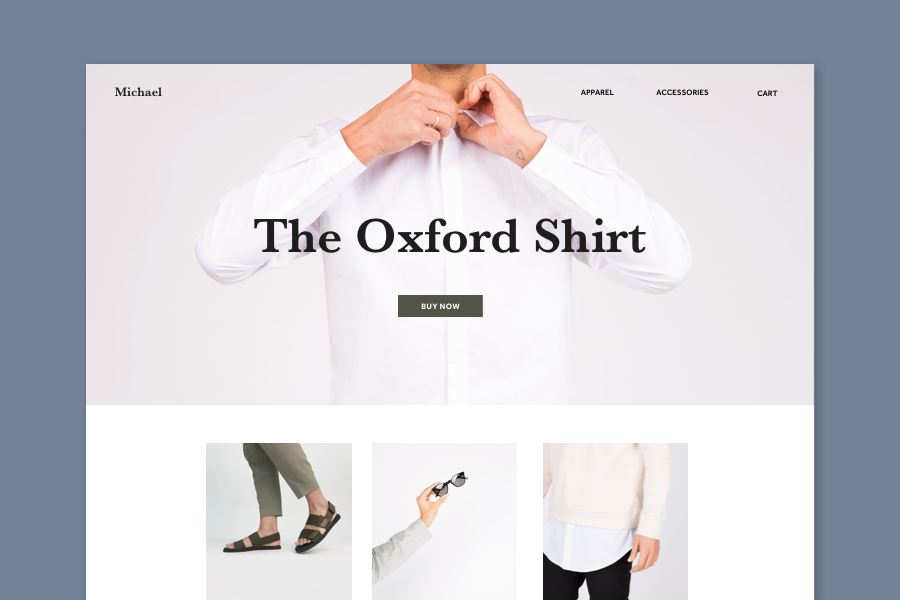1. Use clean, uncluttered graphics
Simplicity can translate into a beautiful, sophisticated site. An overly busy page is likely to confuse viewers and turn them away. You can emphasize your artistry and brand without throwing everything onto the page. Be consistent with fonts, use fewer lines rather than more, and avoid flashing, loud images, unless you have a compelling reason to do so.
Help your customers by making your site easy to navigate and understand. (You might call this the Jerry Maguire "help me help you" concept.) The landing page should show and tell them whether you're selling customized sneakers or tiny houses. It's also important to have a well-done "about" section, like The Box Bros & Company and pour-over coffee seller Kuju Coffee. These pages can shed more light on your enterprise and personality.
Allow visitors to find the information they're seeking in a click or two. Van Tuinen Art, which sells art for commercial and residential spaces, makes its business clear right from the homepage.
2. Invest in good imagery
Consider calling on a professional photographer to put your products in the best light. If you do it yourself, take your time and use good lighting and equipment. Make sure your images are clear and highlight your products' visual appeal. Once you upload a photo to your store, you can crop and make other changes with the new Image Editor.
You can see how Saltopia, an infused sea-salts purveyor, uses colorful, attractive product photographs and mouth-watering images of foods to showcase its offerings.
Besides using high-quality images of your specific products, you may spiff up your site with free or low-cost professional photos. With the image element you can access a stock photo library with free and premium pictures. Weebly Promote also allows you to use gifs and images from Instagram, Unsplash and Giphy in your emails.
A good video can also turn viewers into shoppers. The Box Bros manage to make box-building a mesmerizing visual experience with a slick homepage video.
You can also take advantage of dynamic video features, like flexible headers, video backgrounds and sections. The video background tool includes a free video library to use on your site.
3. Write a good game
Think about the experience of walking into a physical store and eyeing a sweater with no "story," squeezed onto a crowded rack, compared with seeing a clean photo and reading details online or in a catalog about that same sweater and its"forest" or "sunflower" color and buttery-soft feel. Use compelling copy to your store's advantage to make your product tempting, if not irresistible!
Look at the way Kuju Coffee coffee talks about its products on the storefront page. Language like, "Tired of Instant Coffee? So Are We," not only demonstrates product value, but also provides a sense of direction and personality to the brand that drives sales.
Besides product descriptions, there are other ways to draw in customers with content. An engaging blog will have visitors coming back for more. Keep the writing concise and lively, without large, daunting blocks of text that may turn visitors away. If you're not up to the task yourself, pay a good writer to do it for you.
Like any attentive retailer, keep your shop up to date, refreshing content and inventory seasonally, if applicable.
4. Engage customers
You might install an app like Pure Chat or SimpleChat to directly answer customer questions. Apps like Testimonials enable customers to leave reviews, potentially boosting trust and sales.
You also can offer visitors discounts for subscribing to your email list, as Kuju Coffee does, and provide promo codes — perhaps tied into a holiday. Saltopia recently offered a 30% off promo code and sent out an email about the deal and its accompanying Memorial Day sale.
With the right tools, a creative and talented small business owner — even a solopreneur doing it all by themselves — can deliver a top-of-the-line shopping experience.

 RSS Feed
RSS Feed